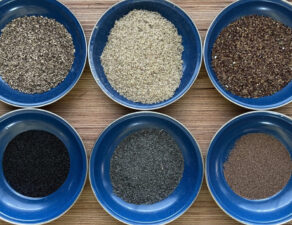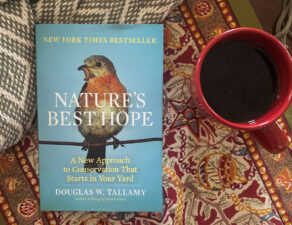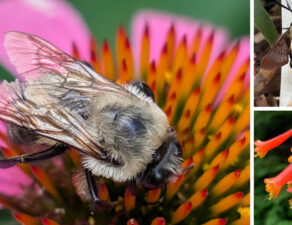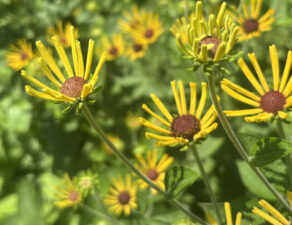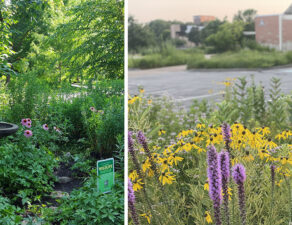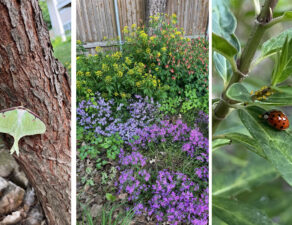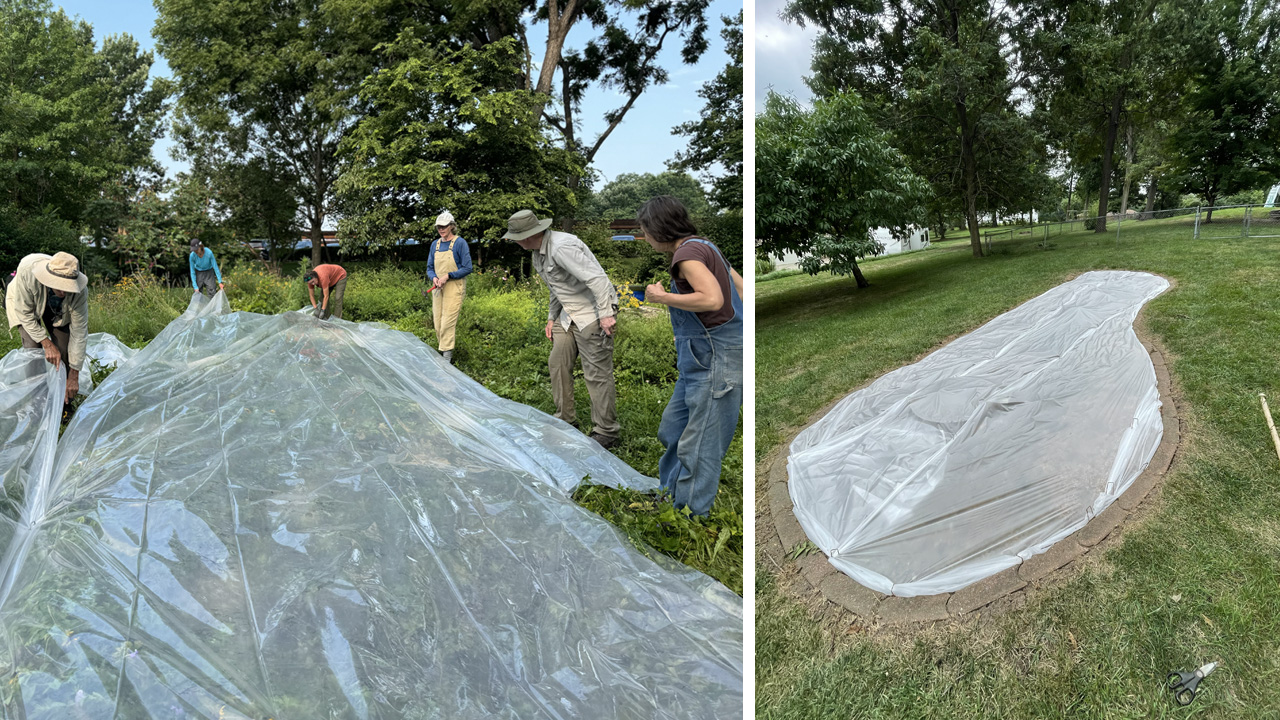
Article and photos by Cydney Ross, Outdoor Education Manager
Though planting a garden isn’t ideal during the summer swelter there are ways you can connect with your native habitat garden. In addition to staying on top of summer weeds, now is a great time to prep new garden beds. One preferred method is solarizing. This is the process of removing existing vegetation by using the heat from the sun. Solarizing encourages plants to grow then heats them up to high temps. It’s an effective, low-labor method for killing existing vegetation.
First cut back the area with a weed whacker to about 1″-2″. Water deeply before pinning down thick, clear plastic (3-4 millimeters) for three to four weeks. This process creates a greenhouse environment. Left behind is a layer of thatch that can be raked away or planted directly into in the fall*. For prolific plants, pull back the plastic after four weeks to allow the seed bank to bounce back. After a week or two of rest, re-pin the plastic and continue to solarize for a few more weeks. Solarizing for more than a few weeks at a time can damage the soil health. Consider top dressing your planting area with a few inches of compost afterwards to improve soil health.
Gardening enthusiasts met at the Anita B. Gorman Conservation Discovery Center earlier this month to solarize a section of garden that was overrun with undesirable species. Earlier in the season volunteers dug up and took home the prolific species like Meadow Anemone (Anemone canadensis) and Shining Bluestar (Amsonia illustris). These are great plants. Just not for this garden.

Not wanting to dig up the entire garden, which would disturb the seed bank and soil structure, we decided to solarize the area. This will make room for species that fit our gardening goals, like those from the Sweet Sixteen: Most Likely to Succeed native plant list. Solarizing as a group was a great way for folks to learn hands-on, so they feel confident to do this in their own landscape.
We have exciting topics coming up during our Discover Native Gardening sessions including “Woodland Wonders: Plant ID and Maintenance Practices,” “Demonstration Garden Design Workshop,” “Invasive ID,” and more! View the schedule and sign up to get in the garden today!
*This of course depends on the species of plants being solarized. I would recommend removing or treating species like Bermuda Grass (Cynodon dactylon) prior to solarizing.
